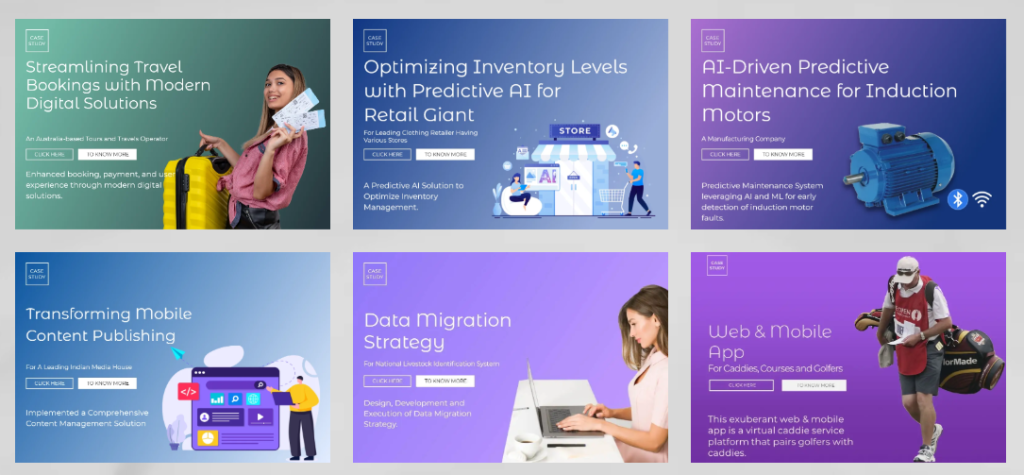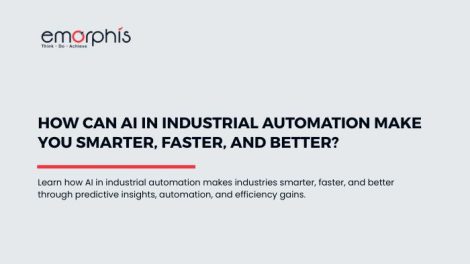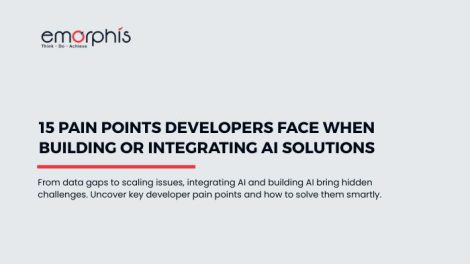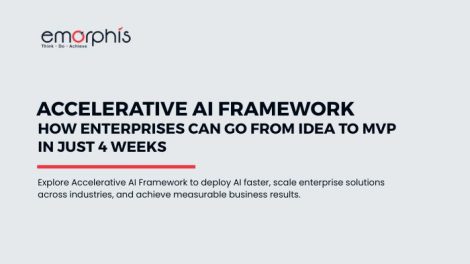Introduction
AI-assisted software development is transforming how programmers write, debug, and deliver code. Also referred to as “vibe coding,” this trend represents a significant shift in which artificial intelligence becomes a collaborative partner in the software development process. Developers no longer start from a blank editor. Instead, they use AI-powered software development tools like GitHub Copilot, TabNine, and Amazon CodeWhisperer to generate code snippets, recommend logic, write documentation, and even conduct automated testing.
But as this revolution grows, one critical question arises: Is AI-assisted software development good or bad for the future of coding? Does it boost productivity and innovation, or does it dilute craftsmanship, degrade quality, and make developers over-dependent on machines?
The truth lies somewhere in the middle. While AI-driven coding has unlocked unprecedented efficiency, many experts warn that it could introduce unseen risks related to code quality, intellectual property, and long-term maintainability. Understanding this balance is crucial for every developer, team, and software business aiming to adopt these new technologies responsibly.
In this article, you will learn how AI-assisted software development improves coding productivity and helps teams deliver high-quality software faster. We will discuss the benefits of AI coding tools for software engineers, explore the risks and challenges of AI-assisted software development, and highlight best practices for teams to adopt AI effectively. You will also gain insights into the future of AI-powered software development in enterprises, understand how AI-driven coding affects developer skills, and discover strategies for reducing technical debt in software projects. By the end, you will have a clear understanding of how to leverage AI-assisted software development responsibly for successful software product engineering.
What the Web Says: Benefits and Drawbacks
The current web landscape shows a lively debate around AI-assisted software development. Most thought leaders agree that it can be both a blessing and a burden, depending on how it’s used.
Benefits of AI-Assisted Software Development
According to Pluralsight and Codacy, AI tools have become powerful assistants that automate repetitive tasks such as boilerplate code generation, documentation, and debugging. This helps developers focus on higher-level logic and design thinking. AI-assisted coding tools also enhance accuracy by identifying errors, enforcing coding standards, and suggesting best practices in real time. These features reduce development cycles and improve team collaboration, especially in agile and DevOps environments where speed and consistency are key.
AI-assisted software development has also made programming more accessible. Non-technical stakeholders or junior developers can now contribute effectively to projects without deep language expertise. This democratization of software creation could bridge global skill gaps and accelerate digital transformation for startups and enterprises alike.
Drawbacks and Risks
However, leading tech blogs like DevOps.com and Reddit discussions highlight growing concerns. AI-generated code often looks correct but may hide inefficiencies, security flaws, or integration issues. Developers risk introducing technical debt, code that works today but causes maintenance challenges tomorrow. There’s also the danger of skill erosion: when developers rely too heavily on AI coding tools, their ability to debug complex systems or design optimal architectures may weaken over time.
Legal and ethical issues also persist. Since AI models are trained on large open-source datasets, questions of ownership, copyright, and licensing frequently emerge. If an AI system generates code derived from licensed repositories, who is legally responsible: the developer, the company, or the model provider?
Lastly, there’s the productivity paradox. While AI speeds up initial coding, teams often spend more time verifying, testing, and refactoring the output. In some studies, this extra work has actually slowed experienced developers down, raising questions about the long-term return on investment for organizations.

Emerging Data: What Recent Studies Show
Recent studies reveal that the impact of AI-assisted software development is more complex than it first appears. While many companies are reporting significant productivity gains, deeper analysis shows a mix of both positive and cautionary trends.
A study published by METR in mid-2025 found that experienced developers were sometimes 19 percent slower when using AI coding assistants on familiar projects. This finding challenges the assumption that AI always accelerates development speed. Reuters later confirmed these results, suggesting that while AI helps beginners write code faster, it can actually slow down senior developers who already understand project architecture. The reason is simple: AI-generated suggestions are not always optimized for context, requiring additional review and corrections.
On the other hand, GitHub’s 2024 developer survey painted a more optimistic picture. About 81 percent of respondents said AI-assisted software development improved collaboration within their teams. Developers felt they could focus more on problem-solving and less on repetitive coding tasks. This shift also encouraged pair programming and documentation, two aspects often neglected under tight deadlines.
However, another analysis published on DevOps.com highlighted a concerning pattern. Examining more than 150 million lines of code, the study observed that AI-assisted code tends to have higher revision rates and slightly lower maintainability scores compared to manually written code. The findings suggest that while AI speeds up initial development, it may create a hidden layer of technical debt that surfaces later during testing and refactoring.
In short, the data suggests that AI-assisted software development delivers real value, but its success depends heavily on context, project type, and the skill level of the developer using it. It enhances productivity when guided properly, but can reduce efficiency if overused or unchecked.
Is It “Bad”? Key Risks to Watch
The question “Is AI-assisted software development bad?” cannot be answered with a simple yes or no. Instead, it depends on how developers and organizations manage the inherent risks that come with AI integration.
1. Technical Debt and Maintainability
AI-assisted software development can produce quick results but often at the cost of long-term maintainability. Auto-generated code may lack proper documentation or consistent logic, making future debugging and scaling more complex. If teams do not implement strict code reviews, this can lead to an accumulation of technical debt.
2. Security Vulnerabilities
AI models are designed to predict patterns based on large datasets. While this is useful for generating code, it also means they may reproduce outdated or insecure coding practices. Without human validation, these vulnerabilities could make software systems more susceptible to breaches.
3. Skill Erosion Among Developers
Another growing concern is the gradual decline in developer skill depth. Over-reliance on AI coding tools can limit exposure to foundational programming concepts. Developers might lose their ability to design optimized algorithms or identify architectural flaws, leading to weaker overall software engineering expertise.
4. Ethical and Legal Challenges
AI-assisted software development also raises questions about ownership and compliance. Since many AI models are trained on open-source repositories, there are risks of producing code snippets that may violate licensing agreements. Companies adopting AI tools must ensure they understand the source of the data and the associated legal implications.
5. The Productivity Paradox
While AI promises faster delivery, teams often spend extra time verifying AI-generated code. This double-checking process can sometimes offset the time saved during initial development. In regulated sectors like healthcare or finance, this paradox becomes even more evident due to the need for rigorous validation and security testing.
Ultimately, these risks do not mean that AI-assisted software development is inherently bad. They highlight the importance of responsible adoption, continuous learning, and balanced use. When used wisely, AI can be a powerful co-pilot rather than a replacement for human intelligence.
Many organizations and developers have found that, when applied thoughtfully, AI coding tools can unlock significant advantages, turning potential weaknesses into opportunities for smarter, faster, and more collaborative software development.

Why It Can Be Good, If Used Right
Despite the concerns, AI-assisted software development offers remarkable benefits when integrated strategically into workflows. The key is to use AI as an augmentation tool rather than a replacement for human expertise.
1. Augmentation, Not Replacement
AI coding tools excel at handling repetitive tasks such as boilerplate code generation, syntax suggestions, and simple debugging. By letting AI manage these routine aspects, developers can concentrate on problem-solving, system design, and creative innovation. This makes teams more efficient while preserving human oversight for critical decisions.
2. Democratization of Development
AI-assisted software development lowers barriers for junior developers and non-technical contributors. With intelligent code suggestions, even those with limited programming experience can actively contribute to projects. This democratization encourages more diverse collaboration and accelerates innovation across teams.
3. Enhanced Collaboration and Workflow Efficiency
By providing consistent code patterns and automated documentation, AI-powered software development facilitates clearer communication among team members. Developers can spend less time explaining repetitive logic and more time focusing on architectural discussions and integration challenges.
4. Strategic Advantage for Organizations
Companies that adopt AI-assisted software development thoughtfully can achieve faster time-to-market and improved resource allocation. By using AI to handle routine coding, teams can dedicate more bandwidth to high-impact features, testing, and user experience improvements, creating a competitive edge in technology-driven markets.
5. Encourages Continuous Learning and Feedback
When paired with proper review processes, AI-assisted software development becomes a learning tool. Developers can see alternative implementations, understand best practices suggested by the AI, and refine their own coding skills through iterative feedback.
Understanding the potential benefits of AI-assisted software development is only part of the picture. To truly leverage its advantages while minimizing risks, organizations must adopt structured best practices and establish clear guidelines for integrating AI into their development workflows.

Best Practice Framework: How to Make AI-Assisted Development Work
Successfully implementing AI-assisted software development requires more than simply enabling AI coding tools. Teams must define processes, set boundaries, and monitor outcomes to ensure AI contributes positively to software quality and productivity.
1. Define Safe Tasks for AI
Not all coding tasks are suitable for AI assistance. Teams should identify repetitive, low-risk areas such as boilerplate generation, code formatting, and simple function creation. Critical modules, security-sensitive components, or complex algorithms should remain under full human control.
2. Maintain Rigorous Code Review and Testing
Even AI-generated code requires careful validation. Continuous integration pipelines, automated testing, and peer reviews remain essential to catch errors, ensure maintainability, and prevent vulnerabilities from slipping into production.
3. Track Technical Debt and Architecture Health
AI-assisted software development can unintentionally introduce hidden technical debt. Teams should monitor code quality metrics, refactor regularly, and enforce architectural standards to prevent AI-generated shortcuts from compromising long-term software stability.
4. Train Developers and Update Workflows
Developers should be trained to understand AI strengths, limitations, and best practices. Prompting the AI effectively, reviewing its suggestions critically, and learning from AI-generated examples should become integral to the workflow.
5. Establish Legal and Licensing Governance
Organizations must verify the sources of AI training data and ensure compliance with intellectual property and licensing regulations. This step protects companies from potential legal issues related to AI-generated code.
6. Monitor Performance Metrics
Track productivity, error rates, code maintainability, and team satisfaction. Metrics help teams assess whether AI-assisted software development is providing real value and guide adjustments in its use.
7. Encourage a Culture of Collaboration
AI works best when it complements human skills. Teams should promote collaboration between developers, AI tools, and other stakeholders, using AI suggestions as guidance rather than unquestionable solutions.
With a structured framework in place, organizations and developers can harness AI-assisted software development more effectively. Looking ahead, understanding how this technology will evolve and the strategic questions it raises is essential for planning long-term adoption and maximizing its benefits.

Future Outlook and Strategic Questions
The future of AI-assisted software development is promising and full of opportunities, but it also brings important considerations for developers and organizations. Experts predict that AI will change the nature of developer roles rather than eliminate them. Developers may spend less time on routine coding and more time on system design, optimization, and creative problem-solving. At the same time, AI models are expected to become more context-aware, producing code that is maintainable and reduces technical debt.
Organizational impacts will also be significant. Teams will need to balance the speed and efficiency gains from AI-assisted software development with the coordination, oversight, and quality control required to avoid hidden costs. Smaller teams and startups could benefit immensely, using AI to bridge skill gaps and accelerate product delivery. However, legal, ethical, and compliance considerations will become increasingly important as AI continues to influence code creation. Establishing policies for AI use, data provenance, and intellectual property will be crucial for responsible adoption and long-term success.
Conclusion
AI-assisted software development is neither inherently good nor bad. Its value depends on how it is used, the context of the project, and the controls implemented by the development team. When applied thoughtfully, AI-assisted software development can enhance productivity, democratize coding, improve collaboration, and allow developers to focus on higher-level problem-solving. At the same time, it carries risks such as technical debt, security vulnerabilities, and skill erosion if relied on indiscriminately.
The key takeaway is that AI should augment human intelligence, not replace it. Organizations that establish clear guidelines, enforce rigorous testing, and continuously monitor outcomes will find AI-assisted software development to be a powerful tool for innovation and efficiency. To explore practical guidance and accelerate your AI-assisted coding journey, go and check the Vibe Coding Guide and get in touch with Emorphis for advanced software product development services now.
Explore a variety of real-world development case studies. Gain insights from practical examples that demonstrate effective strategies, challenges, and measurable outcomes in software product engineering.








 Customizing Salesforce in 2026: The Key to Smarter, Scalable, and AI-Powered CRM Success
Customizing Salesforce in 2026: The Key to Smarter, Scalable, and AI-Powered CRM Success